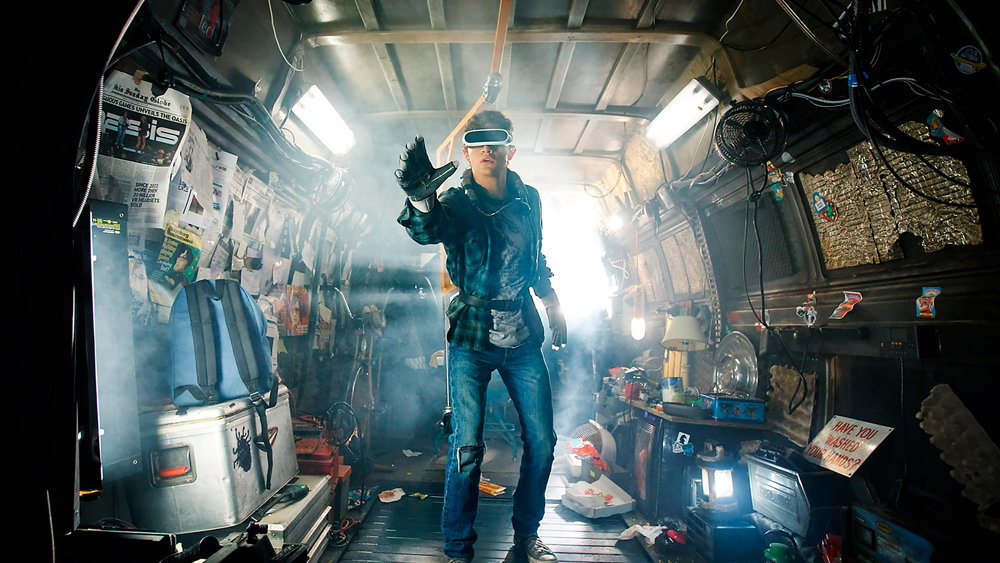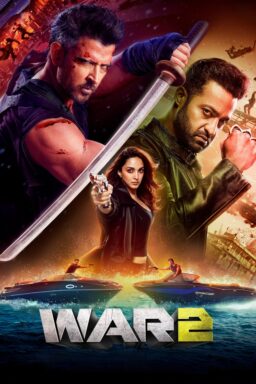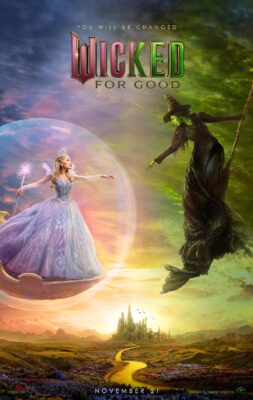Steven Spielberg brought the world premiere of “Ready Player One,” his adaptation of the hit Ernest Cline novel to the SXSW Film Festival and the buzz was as intense as I’ve ever seen surrounding a movie. People were lining up hours in advance. Scrambling to get tickets. A few even cosplayed. And when Spielberg took the stage to introduce the film and its cast, people cheered like we were at a boy band concert in the mid-’90s. For the most part, that adulation carried the crowd for the next 144 minutes, along with the rollercoaster that is this film, even when a sound issue caused the festival to have to stop the movie twice at a truly climactic moment in the story. When the sound worked on the third try, the response from the audience was so boisterous and perfectly timed to the action on screen that I half-wondered if it wasn’t intentional. True interactivity.
So, you’re saying, how’s the movie? The word being thrown around the most on Sunday night was overwhelming, from those who loved it and those who hated it, and it is undeniably that. It’s nearly non-stop action for over two hours. A lot will be written about how much “Ready Player One” owes to fandom and pop culture, but its primary lineage is video games, not just in its narrative but its propulsive force. Much will also be written about how that non-stop momentum doesn’t allow for character, subtlety, catching your breath, etc., but this is a movie that will almost certainly thrill those who Spielberg sets out to thrill—fans of pop culture and even the next generation who is more attuned to tech and video game culture. And make no mistake—this is a “movie,” not a “film,” a distinction that Spielberg made himself in the introduction. He wants people to sit back and enjoy the ride, and so very, very many people will.
“Ready Player One” is the story of a rebellion through the lens of a video game protagonist. In 2045, virtual reality has advanced so far that people spend most of their lives in it. The Steve Jobs of this future is named James Halliday (Mark Rylance), and he invented a virtual world called the OASIS, where you can do anything. You can ski the pyramids, hang out in a casino the size of a planet, or climb a mountain with Batman. Hundreds of people spend their time trying to solve a three-part quest left by Halliday in this virtual world before he died. The first person to find Halliday’s three keys wins it all—control of the OASIS.
Of course, if Apple was handing over company control, there would be competitors at the front of the line to snatch it, and there are some big ones in this future too. Former Halliday intern Nolan Sorrento (Ben Mendelsohn) leads a company that’s literally designed to find Halliday’s keys. They send players into the game every day to try and snag them, but no one has found even one yet. Until a poor kid named Wade Watts (Tye Sheridan) starts to figure it out. With the help of his fellow Gunters (Easter Egg Hunters) including Art3mis (Olivia Cooke) and Aech (Lena Waithe), Wade finally makes some progress in Halliday’s game, and Sorrento will do whatever it takes to stop him.
Spielberg said during his introduction that the references, of which there are too many to list from the big (“The Iron Giant”) to the small (Chucky from “Child’s Play”), are what you see through the side windows of the vehicle and the story is what’s in front of you as you drive through the movie. He’s not wrong. The next generation, who won’t get 95% of the references at least the first time they see it, will fall for the simple rollercoaster energy of “Ready Player One.” It’s a hero’s story—Wade is the David to Sorrento’s Goliath and one doesn’t have to get references to Robert Zemeckis or Monty Python to enjoy that narrative when it’s done well. People will pull apart the easter eggs in “Ready Player One” but, in an improvement over the book, those are truly secondary to the enjoyment of the film. First, there’s nowhere near as many of them, and Spielberg trusts his audience a bit more than Cline did when it comes to describing them because he allows the visuals to do the job. In a mindblowing racing sequence, Wade drives the DeLorean from “Back to the Future,” and Spielberg treats that as matter-of-factly as if it was any car instead of languishing over the nostalgia. He knows those who get it will enjoy it and those who don’t will just think it’s a cool car. And there’s no time to stop the story to explain the reference.
While the amusement park ride-pacing of “Ready Player One” is arguably its strength, it naturally leads to a few weaknesses. Wade’s supporting crew is woefully underwritten, although Cooke does as much as she can with Art3mis. (Check her out in “Thoroughbreds” if you have yet to do so too. She rules.) Again, one could argue this comes from the film’s ties to video game culture, in which “supporting character depth” isn’t really a common thing, but it leads to a notable thinness around the edges of “RPO.” Characters, even the ones we’re supposed to love, are just devices or avatars for Wade’s quest. And that’s an issue that grows even more prominent when one considers the message of “Ready Player One.” I wouldn’t spoil anything, but Wade ostensibly succeeds because he understands the importance of real-world events and reality in general—but the movie doesn’t really reflect that until it needs to in order to wrap things up, and that’s kind of cheating. It’s hard to tell a runaway CGI train to slow down, but there’s a scene between Sheridan and Cooke about midway through the film that’s arguably the only one in which the film does vary its pace and the movie needed more of that. About 98% of “Ready Player One” is plot-driven as Wade and his pals move through the quest, talking about what they need to do next, and that can make for an entertaining experience but also a bit of a hollow one.
Fans of this movie are unlikely to consider that we never really find out anything about Aech or that the love story feels a bit too much like male wish fulfillment (win the game and get the girl!)—they will embrace it as so many did the book and so many have Spielberg’s wondrous adventure films in the past. When The Iron Giant is smashing enemies or King Kong is leaping across buildings, the narrative flaws of the film fade away and it works on the level of technical, blockbuster mastery that Spielberg helped define.
Spielberg said in the Q&A afterwards that when he makes his historical dramas like “The Post” and “Bridge of Spies,” he can distance himself from the projects, almost stepping outside and seeing them in their entirety. When he makes a “movie” like this one, he puts himself in the seat in the theater next to you, trying to enjoy the film through your eyes. When you’re watching “Ready Player One,” you can almost feel the legendary director sitting next to you, laughing at the references, thrilled with the action, and eating his popcorn. You definitely need popcorn for this one.












